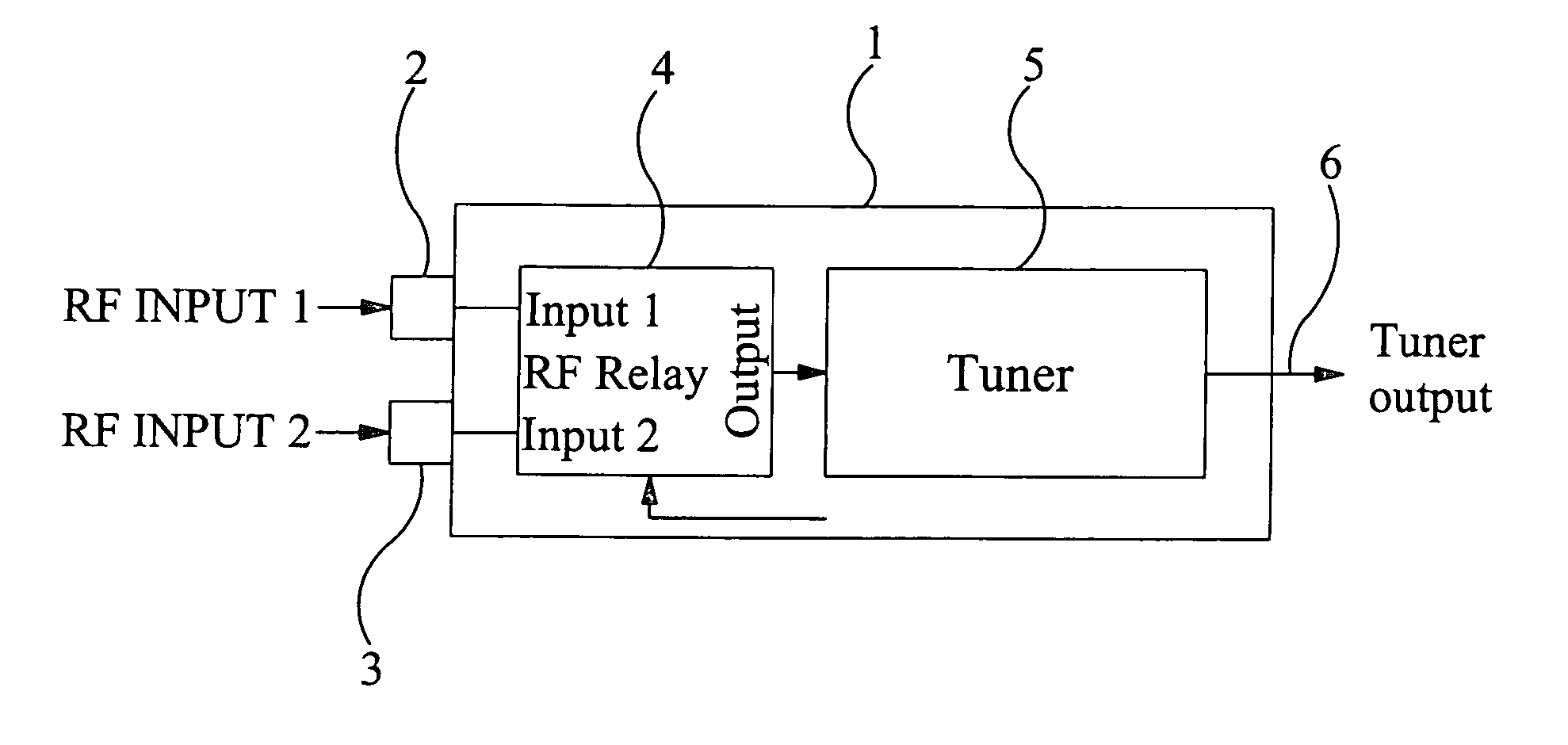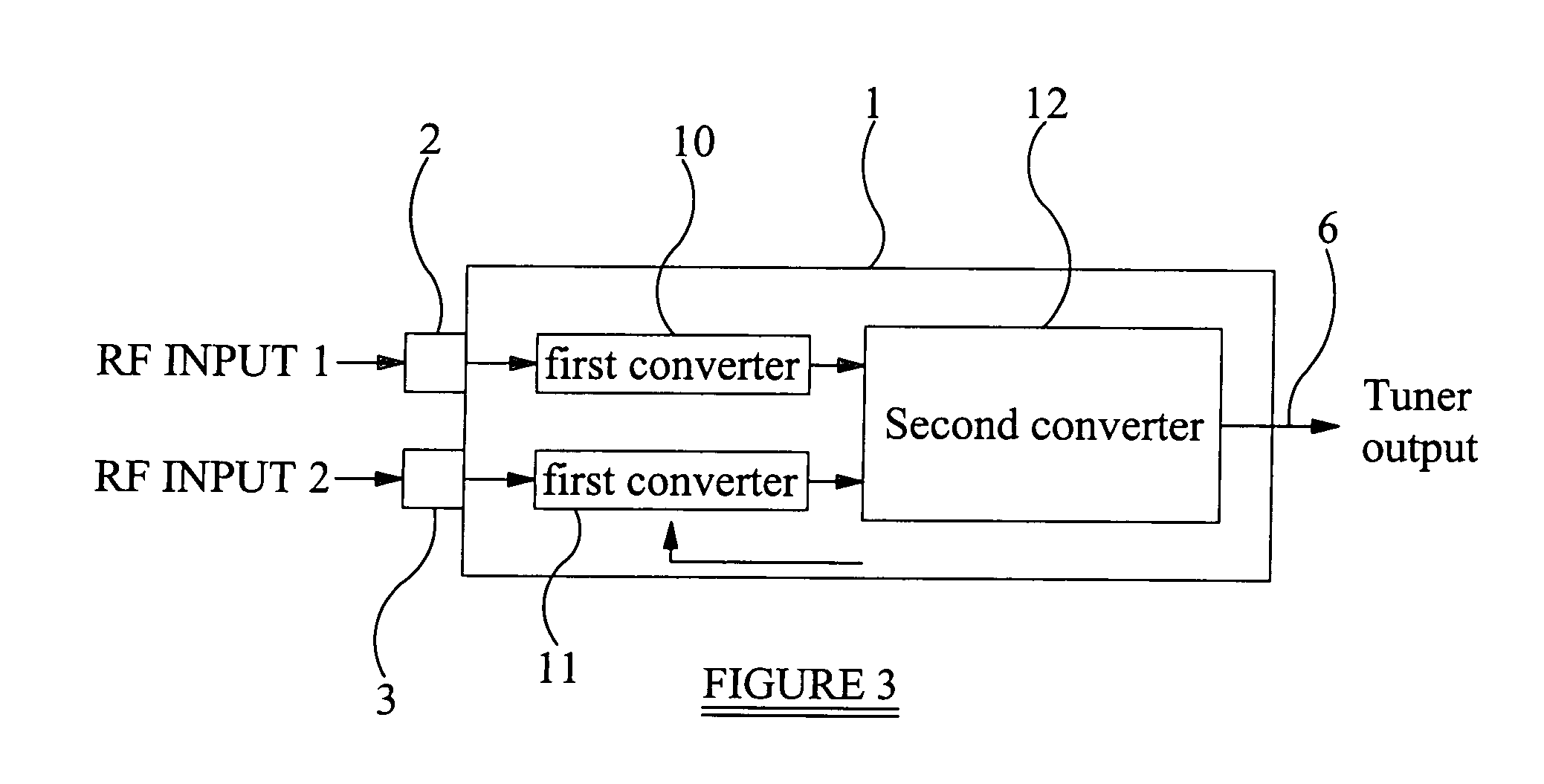Radio frequency tuner
a radio frequency tuner and frequency technology, applied in the field of radio frequency tuners, can solve the problems of reducing the noise figure achievable, insertion loss, and generally not well controlled channel power range, so as to achieve acceptable isolation, reduce the cost, and avoid degradation of performance with time. the effect of relay degradation
- Summary
- Abstract
- Description
- Claims
- Application Information
AI Technical Summary
Benefits of technology
Problems solved by technology
Method used
Image
Examples
Embodiment Construction
[0031] The tuner shown in FIG. 3 comprises an enclosure 31, two radio frequency inputs 32 and 33, and a tuner output 36 as described hereinbefore with reference to FIG. 1. The tuner of FIG. 3 further comprises first frequency changers or converters 40 and 41 whose inputs are connected to the RF inputs 32 and 33, respectively. The outputs of the converters 40 and 41 are connected to respective inputs of a second frequency changer or converter 42, whose output is connected to the tuner output 36.
[0032] Although the tuner shown in FIG. 3 is intended for connection to two distribution networks, such a tuner may be arranged to receive signals from any number of distribution networks. In particular, each network requires an RF input connected to a respective frequency changer or converter, whose output is connected to a respective input of the single second converter 42.
[0033] As illustrated in FIG. 4, the first frequency changer or converter 50 comprises a mixer or multiplier 55 having...
PUM
 Login to View More
Login to View More Abstract
Description
Claims
Application Information
 Login to View More
Login to View More - R&D
- Intellectual Property
- Life Sciences
- Materials
- Tech Scout
- Unparalleled Data Quality
- Higher Quality Content
- 60% Fewer Hallucinations
Browse by: Latest US Patents, China's latest patents, Technical Efficacy Thesaurus, Application Domain, Technology Topic, Popular Technical Reports.
© 2025 PatSnap. All rights reserved.Legal|Privacy policy|Modern Slavery Act Transparency Statement|Sitemap|About US| Contact US: help@patsnap.com



